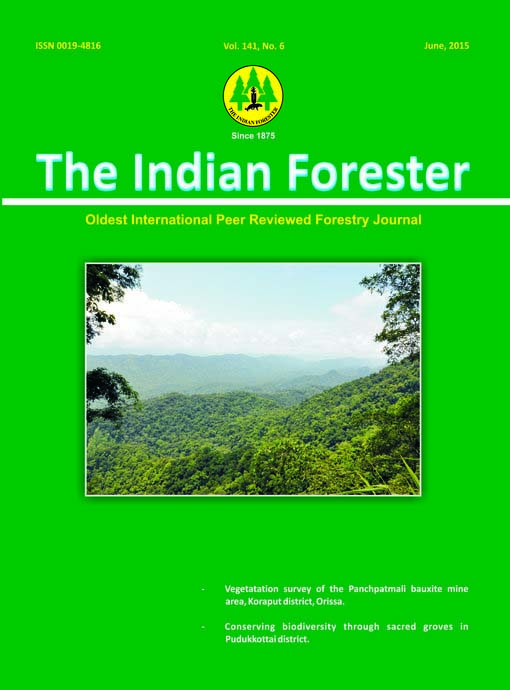In Vitro Propagation of Haldu (Adina cordifolia Roxb.)
DOI:
https://doi.org/10.36808/if/2015/v141i6/71320Keywords:
Micropropagation, Growth regulators, Adina cordifolia.Abstract
Haldu (Adina cordifolia Roxb.) is a naturally grown tree in moist deciduous forests of Bangladesh and has diversified uses. But the population of the species has become threatened due to over exploitation. The large scale propagation of this species is quite difficult through sexual and asexual methods. So to rescue this important species from going to be threatened, attempts were made to develop an efficient protocol through in vitro culture that would maintain and propagate it in large scale. The shoot tips were used as explants and culture established in MS media supplemented with different concentration of BAP and combination of BAP and NAA 0.5 mg/l. It was observed that MS media supplemented with BAP 1.0 + NAA 0.5 mg/l was more effective for shoot production and development. The present study also showed that IBA was more suitable than NAA where IBA 1.0mg/l was found more effective for root induction. After sequential hardening, rooted plantlets were successfully transferred to soil and the plantlets were grown luxuriously.References
Amin M.N. (1991). Callus culture and plant regeneration from an economically important tropical tree-jackfruit In: Intl. Conf. Genetic Engineering and Biotechnology, Kathmandu, Nepal, pp50.
Amin M.N., Islam M.N. and Azad M.A.K. (1999). Regeneration of plantlets in vitro from the seedling explants of Pomegranate (Punica granatum). Plant Tissue Culture, 9(1): 53-61.
Caboni E. and Tonalli M.G. (1999). Effect of 1, 2- Benzisoxazole -3 acetic acid on adventitious shoot regeneration and in vitro rooting in apple. Plant Cell Reports, 18: 985-988.
Cheksum T., Haldina R.I., Sosef M.S.M., Hong L.T. and Prawirohatmodjo S. (1998). (Eds.): Plant resources of south-east asia Timber trees: Lesser-known timbers. Prosea Foundation, Bogor, Indonesia, 5(3):278-280.
Das D.K. and Alam M.K. (2001.) Trees of Bangladesh. Government of the people's of Bangladesh, Bangladesh Forest Research Institute, Chittagong. 19-20.
Dubey D., Koche V. and Mishra S.K. (2006). In vitro plant regeneration from apical buds of Adina corifolia (Hook), Scientific Publishers, India.72-77.
Hoque M.I., Sarker R.H., Haque M.M. and Islam A.S. (1991). In vitro multiple shoot regeneration in Anthocephalus indica L. Bangladesh J. Bot.,20 (2): 193-197.
Kaushal R., Jeena L.S., Chaturvedi S., Tewari L. and Tewari S.K. (2010). Vegetative propagation of Adina cordifolia (ROXB.) HOOK. F. EX BRANDIS. Indian Forester, 136(12): 1693-1697.
Litz R.E. and Conover R.A. (1980). Partial organogenesis in tissue culture of Averrhoa carambola, Hort.Sci., 15:735.
Murashige T. and Skoog F. (1962). A revisedmedium for rapid growth and bioassays with tobbaco tissue cultures, Physiol. Plant., 15:473-497.
Srivastava A., Patel S.P., Mishra R.K., Rajiv K. and Vashistha (2012). Ethnomedicinal importance of the plants of Amarkantak region, Madhya Pradesh, India. Int. J. Med. Arom. Plants, 2(1):53-59.
Upadhyaya S. and Chandra N. (1983). Shoot and plantlet formation in organ and callus culture of Albizza lebbek Benth., Annals of Botany, 52(3):421-424.
Yoganarasimhan S.N. (1996). Medicinal plant of India. Karnataka Interline Publishing Pvt. Ltd.,Bangalore: 1:232
Downloads
Downloads
Published
How to Cite
Issue
Section
License
Unless otherwise stated, copyright or similar rights in all materials presented on the site, including graphical images, are owned by Indian Forester.





